Discussion On Pizzeria Brand Management
Question
Task:
A 2500-word industry-based branding report justifying strategies and tactics for launching a new brand into the UK market. This will be a detailed report comprising of a full branding strategy (including rational, market evaluation, brand development, sources of brand equity and strategies to manage the brand over time) and a comprehensive ‘pitch’ for the new brand.
In the role of an IMC (Integrated Marketing Communication) agency, you will present and justify your strategies and tactics for launching a new brand into the UK market, to the Board of Directors of the company that owns the brand. Your report will explain the full branding strategy (comprising brand development, sources of brand equity, strategies to manage the brand and its architecture over time), and a full IMC and media campaign to launch. The report will include a professional pitch, comprising great visuals and selling power.
You are part of a full-service agency called ABC solutions, and you are pitching to a company that is about to launch a new brand (a new brand, not a new product) into the UK market. Please note this is not an invention: the UK market already exists, and you will face existing competition. You should create a fictitious new brand for a fictitious company that is due to be launched into an existing (i.e. real) market. You are the agency pitching to the client.
The final report should consist of a well-integrated and carefully planned proposal for what branding strategies, tactics and evaluation methods are recommended to the client in order to successfully launch and manage the brand. The report will sell your ideas to the client. This is a practical, industry influenced assignment, so the report should maintain an industry perspective at all times. However, your final ideas should clearly be based on theory, and theoretical concepts and rationale need to underpin your ideas, this is a practical task that should be detailed enough for the client to actually implement it.
The IMC launch campaign should be based on a national launch, which lasts at least 6 weeks with a maximum of 3 months, and with a budget of £2 million. Sources for media prices available on Vital.
Answer
Introduction
According to Casprini et al., (2020, p. 10), brand communication is referred to as a significant tool related to Pizzeria brand management through which most organisations can enrich knowledge based on the stakeholders regarding the brand along with the fundamentals; values as well as the offerings of services and products.. Hence, the present study emphasizes the creation of a brand ‘Pizzeria’ within the food industry, particularly the fast food industry, being launched by the company named ‘Pizza Shoppe’. The study highlights different steps for communicating the respective brand within the market of UK.
Initiating the Pizzeria brand management
Service provided
The brand ‘Pizzeria’ aims to unify the concepts of pizza shops and cafeteria, allowing customers to enjoy pizzas ‘on the go’, just like coffee and other beverages, wherein the pizzas of all variants will be made available in the form of cones, and will be retrievable by the customers, through the vending machines.
Logo
The logo of the brand is generally used for the identification of an organisation and its products (Kennedy, 2019, p. 540). The logo of Pizzeria would feature the type of pizza that will be served, the ‘on the go’ nature of the pizza (depicted by the vehicle in the image, which expresses that customers will be able to enjoy the pizza while travelling), and the freshness of the product (depicted by the green oval). The oval shape also symbolizes the all-encompassing nature of the brand (availability of all different variants of pizza in form of cones and suitability for all age groups).

Fig 1: Logo of the brand
(Source: Developed by the author)
Character
The character of a brand is generally referred to as a set for the human attributes along with the characteristics that are related to the brand providing a unique personality along with recognition within the market (Beck et al., 2020, p. 100). For instance, the present brand consists of a character of competence as it tends to signify the attributes of success through its operational excellence.
Slogan
For the Pizzeria brand management, the slogan of Pizzeria is simple and effective, expressing the very essence that led to its formation; “Pizza on the go”.
Values
Brand values consist of different aspects of the brand like the service or the product offered, the behaviour of the staff, the impact on the environment and the Integrated Marketing communication channels utilized. Pizzeria brand management would offer agility in service, a warm welcome and a note of gratitude to all the customers, to help make their day better as well as minimal adverse impact on the environment, through discouraging the use of any kind of plastics, neither for packing nor for serving. Referring to the findings reported in the studies of Kucuk, (2019, p. 180), it can be stated that the decisions regarding IMC would help Pizzeria brand management to create a strong brand, with a clear message for the customers, to ensure brand loyalty and transparency.
Personality
The personality of a brand can be related to the customers where it is known to increase its equity through having a constant trait, which is enjoyed by the customers (Limbach et al., 2019, p. 230). For instance, Pizzeria brand management aims to provide innovation along with the embracement based on technology, which eventually creates convenience for the customers, through its brand personality depicting agility and speed, which is the truth of modern-day working society.
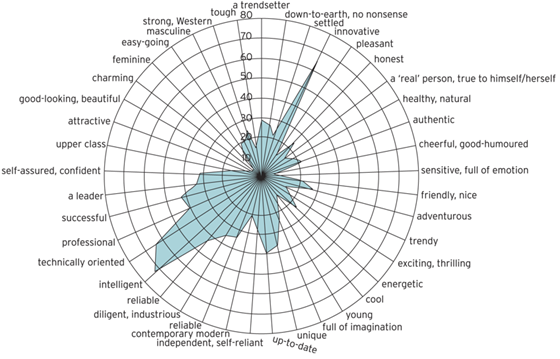
Figure 2: Elements of brand personality
Source: (Dumitriu et al., 2019, p. 2111)
Tangible and Intangible benefits from the brand
The tangible benefits include such advantages to the company, Pizza Shoppe in this case, that can be quantified and measured. For Pizzeria brand management, the tangible benefits accrued by launching the brand will be increased in revenue, increase in footfalls and improved sales figures for the company.
The intangible benefits include such advantages, which cannot be quantified or are difficult to measure, but is significant for the company. The intangible benefits from Pizzeria brand management would include customer satisfaction and improved brand visibility, apart from a steady brand image and repute of the company, Pizza Shoppe, amongst the target customers in the UK market.
What are the strategies used for Pizzeria brand management in the present context?
As opined by Mishra, (2019, p. 510), strategising can be done through identifying the benefits of the brand for the customers. Pizzeria brand management aims to keep its brand architecture ‘individual’ or ‘house of brands’, as a strategy for managing the brand. The brand would maintain its uniqueness under the company ‘Pizza Shoppe’ and would continue serving the customers with the same essence and agility.
Brand equity
Brand equity is generally determined through the value and also identifies the perception of the customers. The present brand consists of a positive brand equity through which the company can also charge extra from the customers. This is because the name of the brand is recognizable for the customers, which also creates a premium value as well.
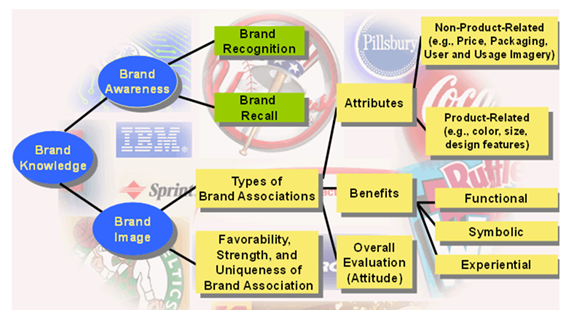
Figure 3: Customer brand equity framework
Source: (Hanifawati et al., 2019, p. 200)
Keller’s Brand Equity Model will be used by Pizzeria brand management for establishing brand equity and determining the marketing strategies to be used.
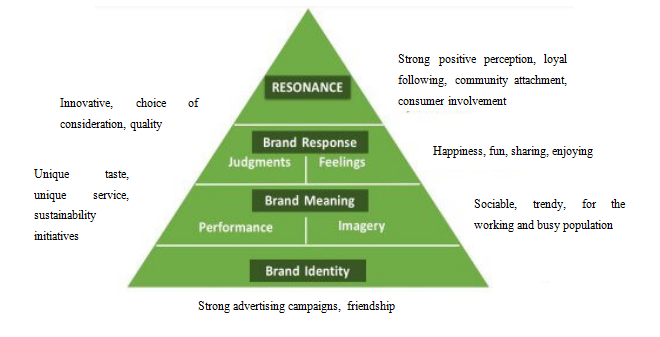
Fig 4: The Customer Based Brand Equity pyramid for Pizzeria brand management
(Source: Developed by the author)

Fig 5: The endorsed brand architecturefor Pizzeria
(Source: Developed by the author)
Positioning the brand
Packaging and positioning of the brand
The positioning statement of Pizzeria brand management will be ‘a company catering to the food-needs of the working population; refresh your taste buds with a unique variant each day, as you go about your daily chores’. The packaging of the brand determines its attraction amongst the customers as well as its likeability and brand value, to some extent (Mosca and Casalegno, 2019, p. 227).
View model depicting the packaging strategies of Pizzeria
To elaborate the packaging and positioning of the brand, the company can implement the view model which describes the brand through certain elements that are mentioned below:

Figure 5: View model
Source: (Becker and Lee, 2019, p. 130)
Visibility: The brand will utilize the logo on bright red packages to be used for parcelling the pizza, to attract the attention of the customers. The packages will be plastic-free, biodegradable and would be insulated like coffee containers, to keep the pizza warm for some time, allowing the customers to enjoy hot pizza.
Information: The brand, in order to maintain its transparency, would outline all the raw materials and ingredients used for making the particular pizza, along with their calorific values in that particular serving, to help the customers understand and mark their calorific intake.
Emotional appeal: The packaging, with the logo, resonates with the feeling and imagery of the brand, of being happy, fun and trendy, while meeting the needs of the busy, working population of modern times.
Workability: The package will have insulation like the coffee containers, to keep the pizza warm and prevent it from getting soggy, for some time after buying the pizza
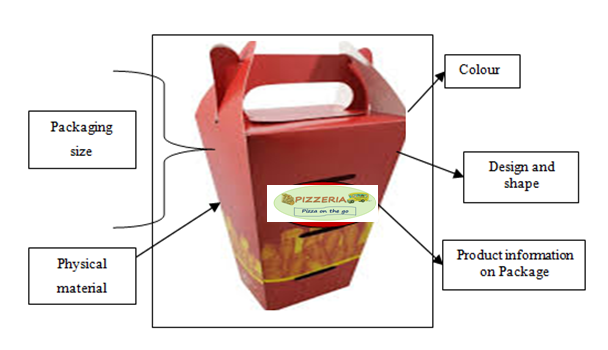
Figure 6: Issues in Packaging
Source: Created by the learner
Target market
Both males and females can make use of this brand. This is mainly concerned with the people who are within the age group of 18-60 years of age. As per the lifestyle of the customers, the working people mostly use it and the middle class to higher class as it consists of a premium policy of pricing.
Positioning strategy
4Cs of positioning can be used for the concerned brand as a positioning strategy, which defines the four notions based on success of the brand (Singh et al., 2019, p. 15).
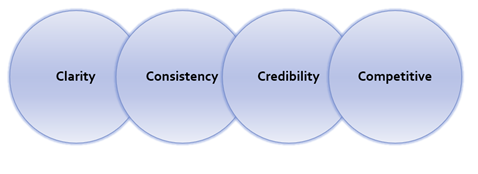
Figure 6: 4Cs of Positioning
Source: (Masiello et al., 2020, p. 750)
Clarity: The positioning statement clearly states the benefits and the target customers that the brand aims to serve. The company is transparent about the ingredients used in the variants of cone pizzas as well, thus, inducing clarity
Compelling: The service being offered in Pizzeria brand management is thus, compelling enough, owing to its benefits of less waiting time (since dispensed through vending machines) and less hassles of carrying back the pizza
Credibility: As stated in the studies of Galloway et al., (2019, p. 50), meeting the needs of the customers as well as ensuring good quality services, enhances the credibility of the brand. The brand satisfies the needs and wants of the customers as it has several benefits like it provides fresh pizza, very quickly without any hurdles.
Contrasting: The stark difference lies in the fact that while the competitors offers facilities for dine-in or take-away, they are unable to offer hassle-free, ‘on-the-go’, easy pizza experiences, with all variants of pizza being delivered through vending machines, within a matter of 5 minutes of entering the choices by the customers, as is being offered by Pizzeria brand management.
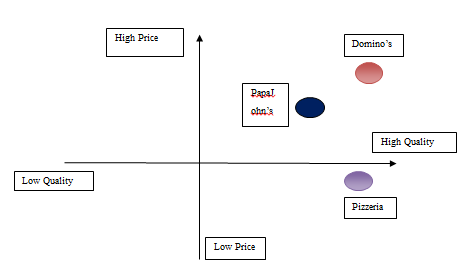
Fig 7: Perceptual map for positioning of Pizzeria brand management against its competitors in the market, based on price and quality of products offered
(Source: Developed by the learner)
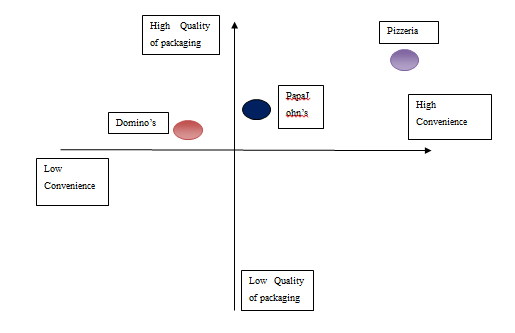
Fig 8: Perceptual map for positioning of Pizzeria brand management against its competitors in the market, based on quality of packaging and convenience offered
(Source: Developed by the author)
Recommendations for launch
For the present brand to be launched within the UK market, there are several channels that can be utilised and are mentioned below:
Distribution channel: Pizzeria will offer their services through their own outlets as well as through intermediaries, especially eateries around office or college settings, for reaching out and serving the maximum possible target customers.
Licensing: This is also utilised by Pizzeria brand management for assuring the customers that all legal compliances are met by the company. According to Tourky et al., (2020, p. 600), licensing is an important aspect to be considered by companies especially operating in the food industry, to maintain transparency.
Celebrity endorsement: The company can utilize celebrity endorsements for propagating their brand, Pizzeria, which would influence the consumer behaviour positively.
Social media advertising: This would be yet another recommended strategy for Pizzeria brand management, since it would be easier to reach out to the target customers through social media and receive feedback which can help in improving the services at a later stage.
Communicating the brand
Segmentation: Segmentation mainly helps the organisations to gain a competitive advantage along with focusing on a particular group of targets for the customers who might reduce the cost. Thus, the segmentation is mentioned below for Pizzeria brand management.
Geographic segment: The organisation has opened up the respective brand first within the market of UK within the local stores as well which increases its use within most of the stores.
Demographic segment: The company has been found to leverage 4Cs related to the brand where the convenience of its cost; solution of the customers and communication are known to be considered for each of the time it provides pizza while using the machine or rather while promoting it.
Psychographic segment: This is mainly preferred by the people as a means of enjoying any party or get together where the food can be served much faster (Foroudi, 2019, p. 280). This eventually helps the brand to provide with the offers on any special occasion which can cheer up the customers to use the same brand as well.
Creative strategy
7Ps of marketing mix can be utilised by the concerned organisation for its brand as a creative strategy for attracting the customers and making them aware of the brand.
Product: The product is the brand itself, which offers cone pizzas, through vending machines, to the busy working population, to enjoy their pizza ‘on-the-go’
Price: Penetrative pricing and competitive pricing strategies would be used by Pizzeria, for offering their services to the customers.
Place: For maintaining a direct channel with the base of the customers, the company has considered the market of UK (Gruchmann et al., 2019, p. 150). Moreover, the stores and outlets dealing with the brand launched by Pizza shoppe are also within the accessible location for the customers.
Promotions: Social media campaigning as well as use of traditional media, celebrity endorsements and digital media would be the promotional strategies for Pizzeria brand management.
People: The employees would be mostly chefs and operators, who would be responsible for the operations of the vending machine and for feeding the machines continuously, in order to ensure a steady flow of products to the customers.
Process: According to Hwang et al., (2019, p. 840), innovative and technologically-advanced services never fail to amaze the customers. Going by the same, the brand aims to deliver cone pizza through vending machines, in packages to keep them warm and easily carry them
Physical evidence: The logo and the unique packaging would act as physical evidence for Pizzeria brand management
IMC objectives
The Integrated Marketing Communication campaign for the respective brand can be effective for creating an awareness of the brand for the customers. This campaign is mainly focused on launching the particular brand in the respective market comprising a budget of 2 million pounds. Thus, the objectives of this campaign have been specific through which the strategic goals of the organisation can be achieved. Some of the objectives are mentioned below:
|
Specific |
Measurable |
Attainable |
Realistic |
Time bound |
|
Creation of brand awareness |
The brand awareness can be measured within people while serving the pizza of the specific brand while using the machine. |
Brand awareness can be achieved through taking the response of the customers with the help of surveys (Iglesias et al., 2020, p. 40). |
The objective turns to reality when the demand for the product increases. |
This might take a time period of 3 months. |
|
Generating an interest of the product |
Interest for the product can be measured while providing a different packaging to the customers and measuring their response. |
This can be achieved through performing market research along with providing samples and advertising. |
The objective can be realistic when served at affordable prices to the customers. |
This might take a time span of 3 months. |
Table 1: Smart Objectives
Source: (Developed by the Learner)
Launch plan
Media and television: The enhancement of the brand awareness in the IMC campaign the campaign will be launched through the media and television. Through the printed media such as the newspapers, magazines as well as visual media, television, the IMC campaign will be launched. The newspaper campaigns would reflect the brand names, the value proposed by the company through the brand to the customers for increasing the sales. Moreover, in the television advertise campaigns, the company will launch the advertisements along with the most popular celebrities in the country to attract greater attention from the people.
Outdoor advertising and PR events:This is another major aspect of the launch plan for Pizzeria brand management. Pizzeria would organize outdoor advertising for attracting the customers on the streets and roads to the stores of Pizzeria. The company would be offering free pizzeria cone pizzas for free for the first few customers who arrive to the outdoor advertising centres and thereby allow the customers to understand the taste and quality of the food. In this way, the company can enhance its sales through the launch plan. On the other hand, the PR events would also be organized by the company for enhancing the awareness regarding the Pizzeria brand management.
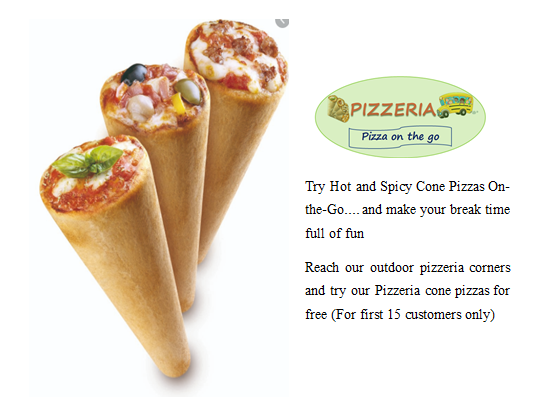
Sample advertisement
Fig 9: Sample advertisement for social media
(Source: Developed by the author)
Media plan
Media strategy
This is referred to as a plan of action which can help the business to reach the target audience along with improving the rate of customer conversion. Some of the media strategies that can be used by the organisation are mentioned below:
Determining the objectives of media
This is to identify the best outlets of media where the advertisements of the organisation can be placed (Raji et al., 2020, p. 30). For the present case of Pizzeria brand management, it might make use of television; Internet and social media as well as celebrity endorsements.
Negotiating and buying media
This requires comparing the proposals of the media regarding the best competitive pricing. Thus, for this brand, the performance and visibility of it can be combined.
Media planning
This is known to be the process to identify the outlets of the media. For instance, the present brand might consider the use of magazines; TV and internet placement where the paid advertisements are needed to create brand awareness for the customers (Hammann et al., 2019, p. 767). Thus, the brand can cover its target audience who can also be exposed within the media while measuring their frequency to be in the provided medium.
|
1st month |
2nd month |
3rd month |
Total |
|
|
Market research |
£200,000.00 |
£200,000.00 |
£200,000.00 |
£600,000.00 |
|
Sales promotional plan digital marketing planning |
£150,000.00 |
£200,000.00 |
£200,000.00 |
£550,000.00 |
|
Digital marketing planning |
£120,000.00 |
£120,000.00 |
£120,000.00 |
£360,000.00 |
|
Direct outdoor advertisement |
£60,000.00 |
£70,000.00 |
£70,000.00 |
£200,000.00 |
|
Social media and interactive advertisements |
£90,000.00 |
£90,000.00 |
£90,000.00 |
£270,000.00 |
|
Creative designing |
£7,000.00 |
£6,000.00 |
£6,000.00 |
£20,000.00 |
|
Newspaper and magazine advertisements |
£5,000.00 |
£5,000.00 |
£5,000.00 |
£15,000.00 |
|
Television advertisements |
£7,000.00 |
£6,000.00 |
£6,000.00 |
£19,000.00 |
|
Outdoor advertisements and free samples |
£15,000.00 |
£10,000.00 |
£10,000.00 |
£35,000.00 |
|
PR events arrangements |
£10,000.00 |
£10,000.00 |
£10,000.00 |
£30,000.00 |
|
Total campaigning expenses in 3 months |
£664,000.00 |
£717,000.00 |
£717,000.00 |
£2,099,000.00 |
Table 2: Budget allocation
Source: (Developed by the Learner)
Conclusion
To conclude, the present study has evaluated the concept of Pizzeria brand management within the UK market, while checking the different aspects involved in the formation and maintenance of the brand. Many tactics and strategies along with techniques have been outlined in the above section through which brand awareness can be created within the customers supported by different frameworks; theories and models as well.
References
Beck, S., Prügl, R. and Walter, K., 2020. Communicating the family firm brand: Antecedents and performance effects. Pizzeria brand management European Management Journal, 38(1), pp.95-107.
Becker, K. and Lee, J.W., 2019. National culture characteristics for managing corporate reputation and brand image using social media. Global aspects of reputation and strategic management. Research in global strategic management, 18, pp.127-142.
Casprini, E., Melanthiou, Y., Pucci, T. and Zanni, L., 2020. Managing founder-based brand identity during succession. Journal of Brand Management, 27(1), pp.1-14.
Dumitriu, D., Militaru, G., Deselnicu, D.C., Niculescu, A. and Popescu, M.A.M., 2019. A Perspective Over Modern SMEs: Managing Brand Equity, Growth and Sustainability Through Digital Marketing Tools and Techniques. Sustainability, 11(7), p.2111.
Foroudi, P., 2019. Influence of brand signature, brand awareness, brand attitude, brand reputation on hotel industry’s brand performance. International journal of hospitality management, 76, pp.271-285.
Galloway, C., Ashwell, D., Croucher, S. and Diers-Lawson, A., 2019. Testing times: Communicating the role and uncertainty of analytical procedures in a food safety crisis. Asian Journal of Communication, 20(2), pp.42-58.
Gruchmann, T., Böhm, M., Krumme, K., Funcke, S., Hauser, S. and Melkonyan, A., 2019. Local and sustainable food businesses: Assessing the role of supply chain coordination. In Innovative Logistics Services and Sustainable Lifestyles (pp. 143-163). Springer, Cham.
Hammann, J.A., GoalAssist Corp, 2019. System and method employing capacity/demand management in prepared food service industry. U.S. Patent 10,346,767.
Hanifawati, T., Ritonga, U.S. and Puspitasari, E.E., 2019. MANAGING BRANDS’POPULARITY ON FACEBOOK: POST TIME, CONTENT, AND BRAND COMMUNICATION STRATEGIES. Pizzeria brand management Journal of Indonesian Economy and Business, 34(2), pp.185-202.
Hwang, J., Cho, S.B. and Kim, W., 2019. Consequences of psychological benefits of using eco-friendly services in the context of drone food delivery services. Journal of Travel & Tourism Marketing, 36(7), pp.835-846.
Iglesias, O., Landgraf, P., Ind, N., Markovic, S. and Koporcic, N., 2020. Corporate brand identity co-creation in business-to-business contexts. Industrial Marketing Management, 85, pp.32-43.
Kennedy, D.M., 2019. Managing the Mayo Clinic brand: a case study in staff-developed service performance standards. Journal of Brand Management, 26(5), pp.538-549.
Kucuk, S.U., 2019. Managing Brand Hate. In Brand Hate (pp. 163-191). Palgrave Macmillan, Cham.
Limbach, M., Schmidt, S., Wiedmann, K.P., Langner, S. and Schiessl, M., 2019. Communicating sponsor brands playfully in video games: Evaluating the impact of in-game advertising on dual Brand knowledge. Journal of Global Sport Management, 4(3), pp.211-235.
Masiello, B., Bonetti, E. and Izzo, F., 2020. Multiple identities of a festival: intended, communicated and perceived brand personality in the social media environment. International Journal of Contemporary Hospitality Management, 32(2), pp.749-768.
Mishra, S., 2019. When patients connect with physicians on facebook: physician perspectives on benefits, challenges, and strategies for managing interaction. Health and Technology, 9(4), pp.505-515.
Mosca, F. and Casalegno, C., 2019. Managing Integrated Brand Communication Strategies in the Online Era. Global Branding: Breakthroughs in Research and Practice: Breakthroughs in Research and Practice, p.227.
Raji, R.A., Mohd Rashid, S., Mohd Ishak, S. and Mohamad, B., 2020. Do firm-created contents on social media enhance brand equity and consumer response among consumers of automotive brands?. Journal of Promotion Management, 26(1), pp.19-49.
Singh, R.K., Luthra, S., Mangla, S.K. and Uniyal, S., 2019. Applications of information and communication technology for sustainable growth of SMEs in India food industry. Resources, Conservation and Recycling, 147, pp.10-18.
Tourky, M., Alwi, S.F.S., Kitchen, P., Melewar, T.C. and Shaalan, A., 2020. New conceptualization and measurement of corporate identity: Evidence from UK food and beverage industry. Pizzeria brand management Journal of Business Research, 109, pp.595-606.
Widiastuti, T., 2019. The Implementation of Brand Element Strategic in Marketing Communication on Local Small-Medium Business in West Sumatra. Jurnal Komunikasi Ikatan Sarjana Komunikasi Indonesia, 4(1), pp.55-64.












